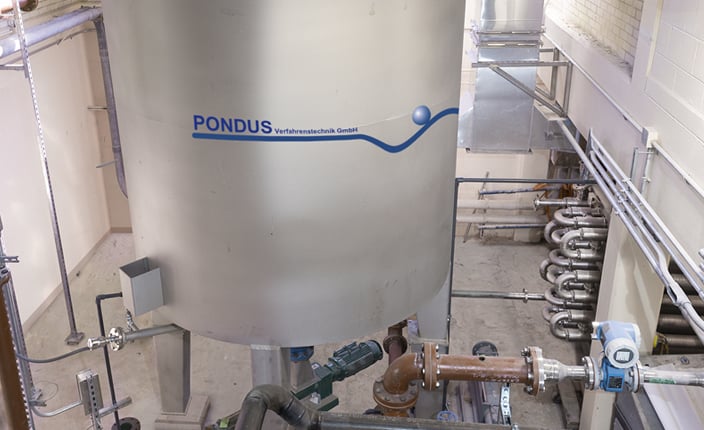Capture More Biogas with Thermal Hydrolysis

PROBLEM
The Kenosha Wastewater Treatment Plant was producing more biogas than it could use, but not enough to justify installing another gas engine. The additional gas they were producing was being flared, basically burning money.
SOLUTION
By using the PONDUS hydrolysis process on the waste-activated sludge, Kenosha was able to increase its gas production by 20+%. This allowed for the installation of a combined heat and power (CHP) unit, its engine runs on methane gas and turns a generator to create power. The heat produced by the engine is used to heat the waste-activated sludge and make the PONDUS system work to create more gas. It is a symbiotic relationship that allows the plant to produce about one third of its overall electrical consumption. According to Kenosha - The PONDUS hydrolysis process was an easy choice because of the simplicity of its operation. There is a tube-in-tube heat exchanger, a hydrolysis reactor, two progressive cavity pumps, and a sodium hydroxide dosing station. Temperatures are maintained around 140 degrees F, which does not require any additional safety precautions. PONDUS utilizes a thermo-chemical reaction that changes the viscosity of the sludge. Since the sludge is thickened to almost 7% solids, it can be difficult to pump, but PONDUS turns the sludge into a milkshake consistency for a trouble free, easy flow.